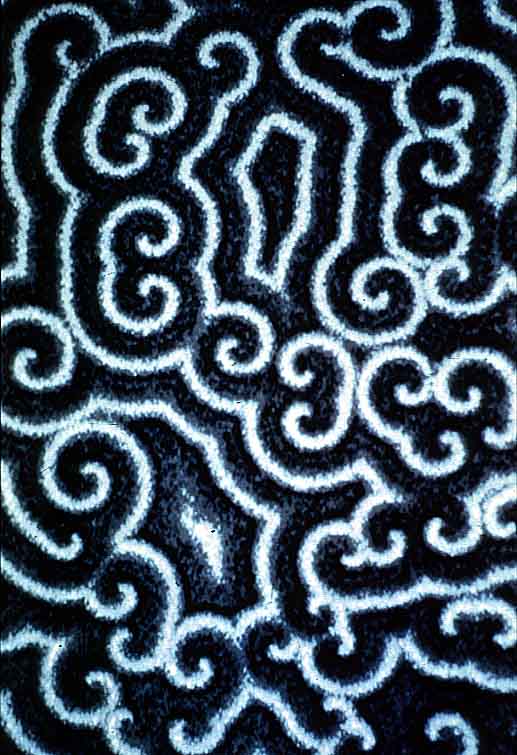|
While colonies of ants may look at first glance like simply a bunch of ants running around aimlessly, a closer and more careful look shows substantial social organization. One aspect of this organization is that different ants are at any given time engaged in different tasks. Some ants are "patrolling" (guarding areas of the nest), others are engaged in "midden work" (cleaning up debris), and still others are "foraging" (scouting the surrounding area for food and resources). This "task allocation" is an important feature of the social organization of an ant colony. What causes some ants to patrol, others to forage, and still others to do midden work? Is there a director? A model can't answer these questions for any particular real life situation, but it can give one new ways to think about them.
Click on Setup ants to populate our model ant colony (or to start over after you've run a simulation). This divides the world into three areas: on the right, a larger green area for foragers, on the bottom left a brown area for midden workers, and on the top left a gray area for patrollers. The ants show up as different colors to make it easier to visualize how they are dispersed. Foragers are red, midden workers purple, and patrollers blue.
Click Go to start the simulation. What happens? Notice that about 50% of the ants are foraging, about 25% are doing midden work, and another 25% or so are patrolling. Maybe ants are born with a destiny (or fate, depending on how you look at things) and so there are foragers, midden workers, and patrollers from birth in the percentages we observe. Let's test this idea by following an ant around. Select Watch an ant to follow a randomly-chosen ant; if you want to follow a different ant or return to the original view just click the Reset view button below.
Notice that individual ants seem to be moving more or less randomly around in their work space. Even more importantly though, if you watch long enough, you'll notice that individual ants can and do switch tasks.
There doesn't seem to be three different kinds of ants with separate, fixed tasks. It looks instead as if the ants may be pretty much the same, at least in the sense that they can all do any of the three jobs.
What would happen if we started with only foragers? or only midden workers? or only patrollers? Try that out by clicking on the appropriate button and then clicking Go. Regardless of which we start with we end up with workers of all three kinds, consistent with our understanding that individual ants can switch tasks. Furthermore, no matter what we start with we end up with ants distributed among tasks more or less as they were when we first looked at the colony (50% foragers, 25% midden workers, and 25% patrollers).
So, ants are not really that much different from one another in terms of the tasks they can perform, and actually switch over time from one task to another. And no matter what the starting configuration, given enough time the colony always reaches more or less the same organization in terms of how the ants are divided among tasks. While the percentages fluctuate, they stabilize in the range of 50% foragers, 25% midden workers, and 25% patrollers.
How does this happen? Is there a chief ant somewhere who tells the other ants which jobs need to be filled at any given time? Let's look next at that question.
 
|



